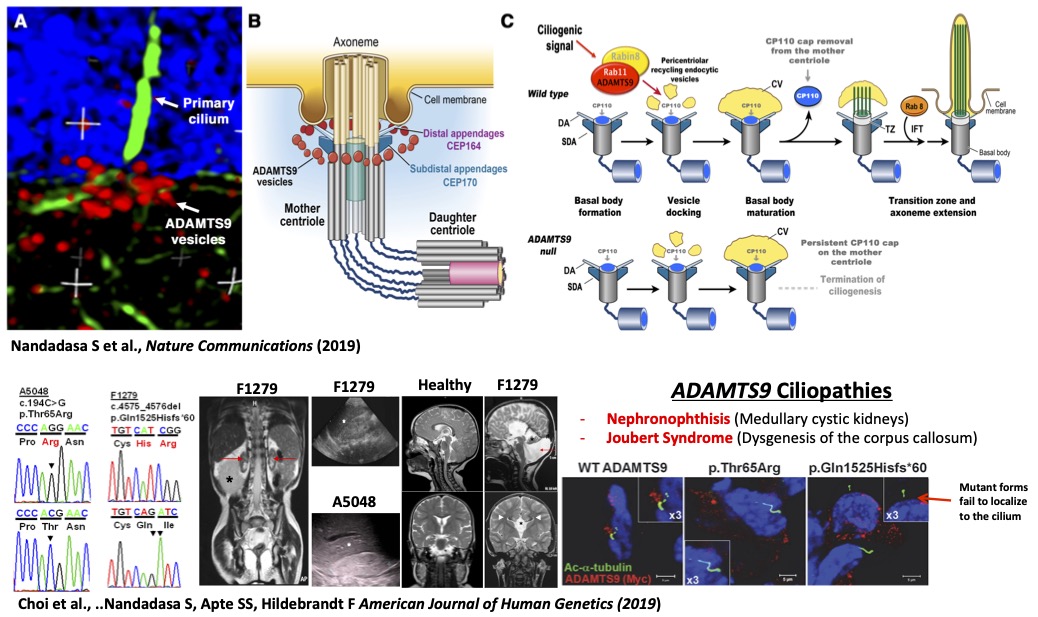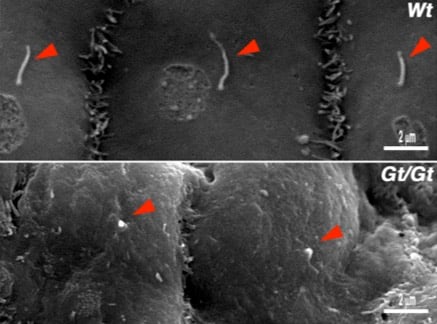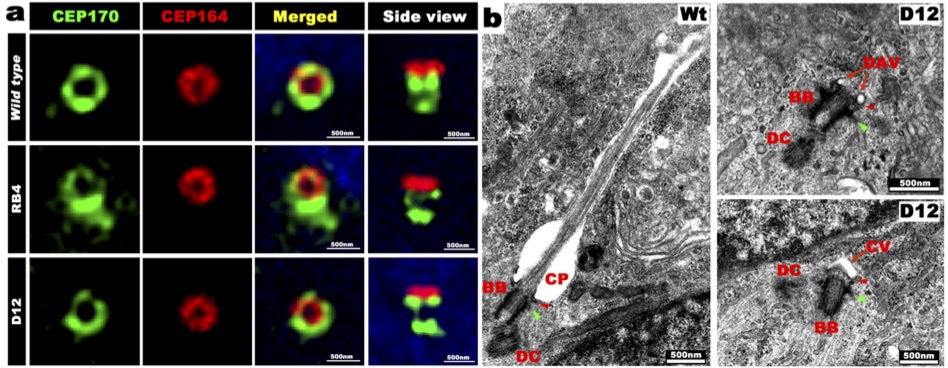ADAMTS proteases in ciliogenesis


It is long known that metalloproteinases belonging to the MMP family can be recycled and are endocytosed by cell surface receptors. However, it was not clear if other metalloproteinases also show this ability and whether there are proteolytic functions associated by this process. By the development of specific antibodies against ADAMTS9 and ADAMTS20 in combination with super-resolution microscopy, we were able to identify a population of vesicles carrying activated enzymes localized at the base of the primary cilium (Image 1, panels a,b Nandadasa et al., Nature Communications 2019). By investigating the molecular mechanism associated with this localization, we discovered that ADAMTS9 depends on the cell surface receptors LRP-1 and LRP-2 and clathrin-mediated endocytosis for this re localization from the cell surface and is targeted to the ciliary vesicle via Rab11+ recycling endocytic vesicles. ADAMTS9 deficient cells (D12 and RB4, image-2a), form normal mother centrioles with distal and sub distal appendages but fail to extend the ciliary axoneme (Image-1c). These cells do not progress beyond the ciliary vesicle docking stage (image-2b).

In two families with ADAMTS9 mutations, patients manifest nephronophthisis (NPHP) and Joubert syndrome (JBTS), two well characterized ciliopathies (image-1 bottom, Choi et al., AJHG 2019). CRISPR/Cas9 engineered human cell lines deficient for ADAMTS9 also show decreased ciliogenesis and hypomorphic Adamts9 mouse mutants show extremely short and bulbus primary cilia (image-3, Nandadasa et al., Nature Communications 2019).
The underlying mechanism of ADAMTS9 function in ciliogenesis however has not been fully elucidated. Current research in our lab is focused on:
- Discovering the substrates of ADAMTS9 proteolytic activity required for ciliogenesis and
- Understanding how proteolytic modifications (cleavage) of substrates drive cilium assembly. My work has uncovered an intriguing role for ADAMTS9 as a key regulator of ciliary transition zone (TZ) assembly by the proteolytic modification of a key TZ member, TMEM67. Currently we are investigating how ADAMTS9-mediated cleavage of TMEM67 regulates transition zone assembly and primary cilia biogenesis as well as the impact on cell signaling.
